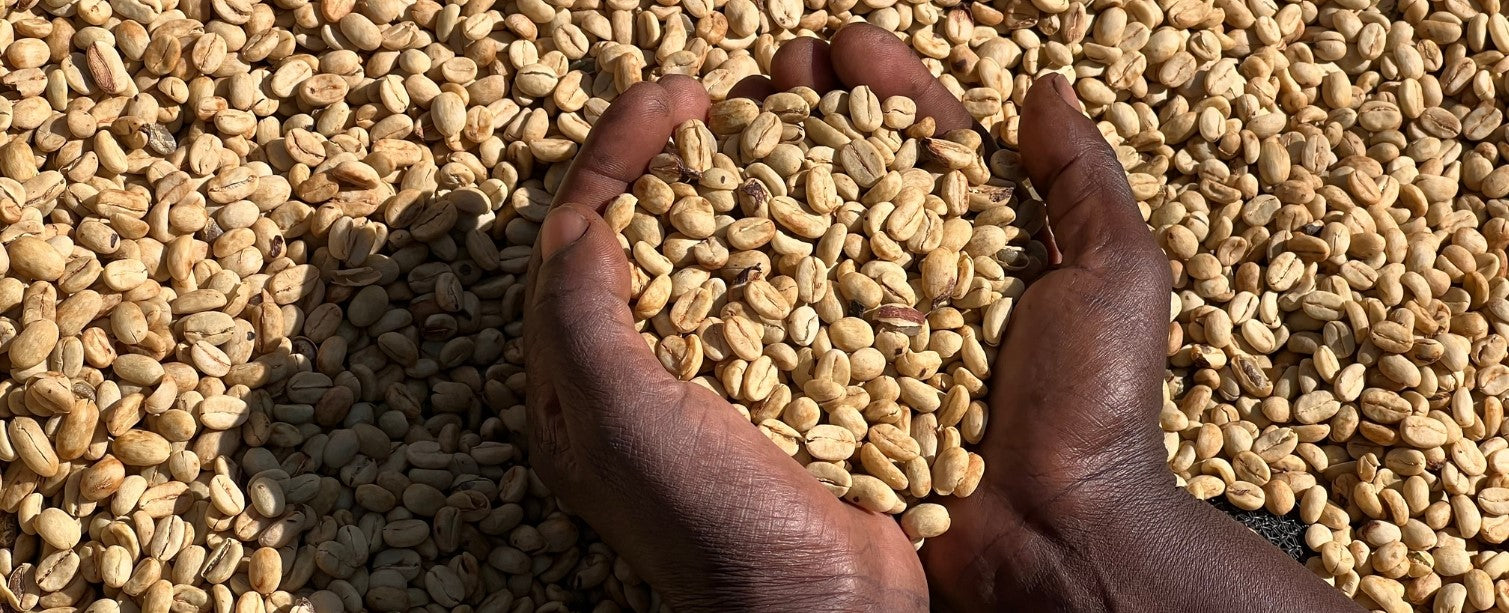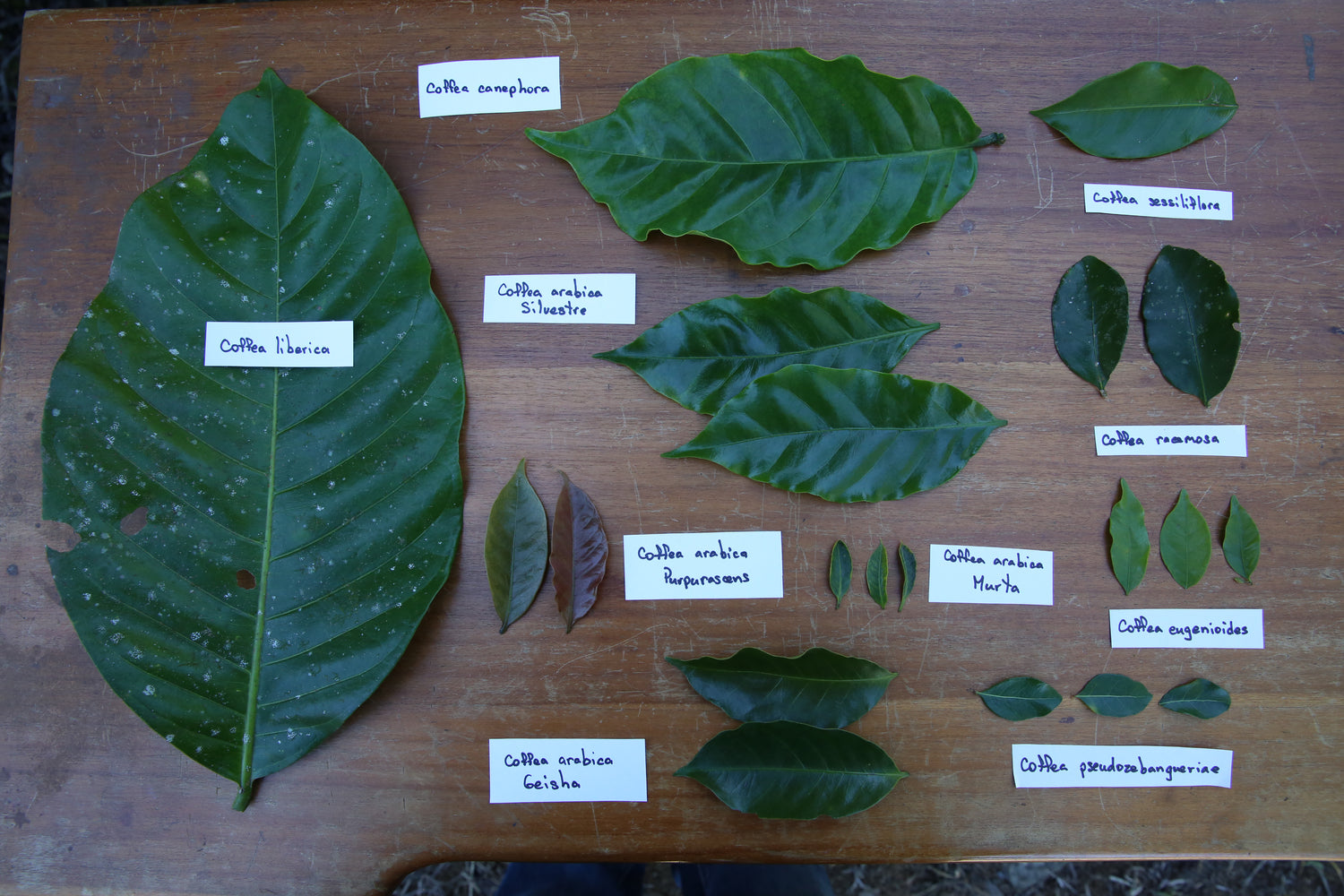Processing
What is Processing?
Coffee production is an all-encompassing term for virtually every step before roasting. This includes processing, harvesting, grading, sorting, and hulling of the coffee bean, to name just a few. It is a massive industry and a significant source of income for millions of households worldwide. The step we are focusing on here is what happens to the cherries after harvest, which is called processing.
Processing, in essence, is all about drying the coffee beans in preparation for roasting. This can be done in various ways, with some regions and countries having unique methods. But it predominantly falls into one of three categories: washed, natural, or honey. Each has a different impact on the flavour, and each can contribute to the value of the finished green bean in various ways.
How do coffee beans go from farm to cup?
Processing is just one step in your coffee bean's long journey from farm to cup. Here's a breakdown of that journey.
- Cultivation and Harvesting: Coffee plants are cultivated in regions where the sun shines directly overhead for long periods, and the climate is hot and humid. Typically, it is between the tropics of Cancer and Capricorn. Coffee cherries, which contain the coffee beans, ripen on the trees. Harvesting is either done by hand, selecting only the ripe cherries or by machine.
- Processing: After harvesting, the coffee cherries undergo processing to extract the beans. Two processes dominate this step: natural and washed. There are other variations in processes, such as honey or semi-washed and pulped natural. You can read more about coffee processing here.
- Drying: The beans, whether encased in the parchment or dried with the fruit, are spread out to dry in the sun.
- Milling and Hulling: Once dried, the beans go through milling and hulling to remove any remaining layers of parchment or husk.
- Sorting and Grading: The beans are sorted based on size, weight, and quality, ensuring uniformity and consistency in the final product.
- Exporting: The sorted and graded beans are packaged and exported to coffee roasters worldwide.
- Roasting: Coffee roasters receive the green coffee beans and roast them to develop the flavours. Roasting is a crucial step that significantly influences the final product's taste.
- Enjoying: The coffee is ready to be ground, brewed and enjoyed.
Throughout this process, various factors, including the coffee's origin, altitude, processing method, and roasting profile, contribute to the unique flavour profile of the final cup. The journey of coffee beans, from farm to cup, demands hard work and expertise from everyone involved at each stage, resulting in the unique and distinct flavour of the final cup.
What are the different types of coffee processes?
Generally speaking, there are three main processes: natural, washed, and honey. However, the coffee industry is never static, and new processes are constantly popping up. Here's a breakdown of some of the processes in your favourite FiXX.
Natural (dry process)
This is the oldest known method of coffee processing. Once harvested, the cherries are laid out on elevated drying beds or sometimes patios for up to 3 weeks. During this time, the flavours of the fruit are absorbed by the bean, giving coffee processed this way, potent berry and fruity notes. Leaving the cherry on the bean during drying increases fermentation, giving naturals a winey, almost boozy flavour profile.
The natural method has traditionally been considered lower quality than washed and honey coffees. This was mainly due to inconsistencies in crops due to unripe fruit turning brown alongside ripe fruit during drying. However, as technologies and techniques improved, so did consistency, and FiXX Lisbon is an excellent example of this method being done well. The Yellow Bourbon variety we use in FiXX Lisbon is processed natural, meaning the coffee bean absorbs the flavours of the unique yellow cherry that surrounds it.
Washed (wet process)
The washed method is the most common in quality coffee production and makes up the vast majority of our FiXX blends. One of the reasons for this is its ability to regulate consistency. After harvest, the cherries are passed through water channels where the ripe fruit will sink to the bottom, leaving the unripe and defective cherries floating on top, which are easily removed. Unlike with naturals, the fruit pulp is removed, leaving only the mucilage, the sticky layer surrounding the seed. The mucilage is then removed by soaking the beans in fermentation tanks for 8-50 hours. After this step, the green beans will be rinsed again before being sent to dry.
Because the fruit is removed before drying, all the flavours must have been absorbed during the growth of the cherry. A shorter fermentation time also gives washed coffees fantastic clarity of flavour. When it comes to coffees processed this way, varietal, climate, soil acidity, and harvest times, amongst other factors, are uniquely fused to the flavour of the final beverage. It highlights the farmer's integral role and reflects the science behind growing the perfect coffee bean. As a result, the characteristics of the country of origin can become very apparent through this method.
Honey (pulped natural/ semi-washed)
This process is almost like a bridge between natural and washed processing. When done correctly, it can bring out the best of both. As with the washed process, after harvest, the cherries pass through a water channel where the defective fruits are removed. The ripe ones are then de-pulped, leaving you with the bean covered in its layer of mucilage. But this is where the process shifts back towards the natural approach.
Whereas the washed process would now soak and remove all of the mucilage before drying, the honey process doesn't. Depending on producers' preferences, some, most or sometimes all of this layer is left on the bean while drying. How much is left on dictates how long it takes to dry. This can drastically impact the levels of sweetness and give way to subcategories, such as Yellow, Red or Black honey.
What is the Best Processing Method?
Each of these methods can produce outstanding coffees. Be it the big fruitiness of naturals, the complex clarity of washed, or the sweetness of honey, there is something to love in all of them. But not every farm is suited to every process. Like farmers everywhere who work in unison with the surrounding environment, they are dictated by climate. How much rain fell during the growing of the coffee and how much rain will fall after harvest can influence this decision.
However, access to water, equipment, labour, and market demand must also be considered. Washed, for example, requires a great deal of water and access to equipment such as a pulping machine, fermentation tanks and water channels.
On the other hand, naturals without the need for equipment can achieve fantastic quality at a reasonably low cost. However, it is labour-intensive. Throughout the drying period, the fruit must be continually raked and turned to ensure even drying while also being constantly monitored to avoid defective fruit spoiling the good ones. It also requires more space for drying, which can limit production. Then you have the Honey process, which faces the challenges of both washed and natural.





